It stands in a commanding position on the peninsula that juts out to the right as you sail into the small harbour, and looks out across the channel to the indented outline of the Peloponnisos. Immediately below the house is a grove of pines wherein lie the remains of Paul Koundouriotis, the scion of one of Greece’s most illustrious families. From its heights, the house looks down on the town of Hydra clustered around the curved bay.
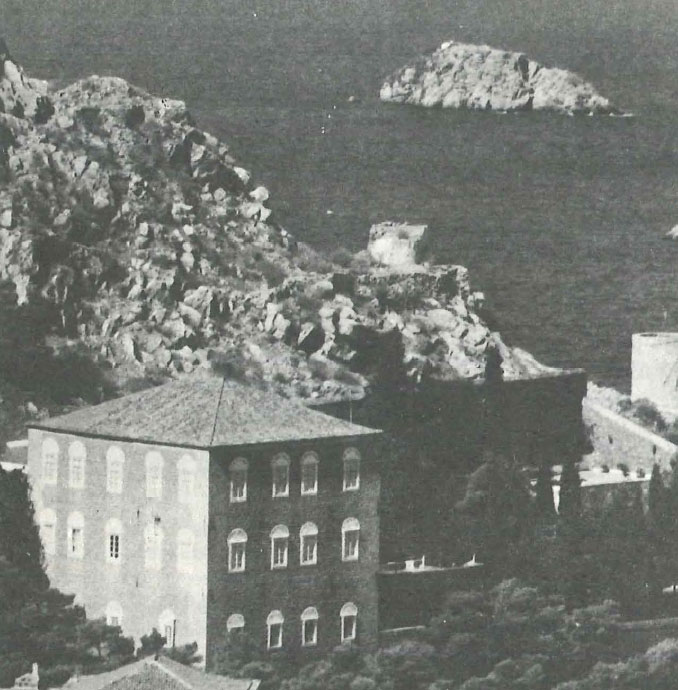
The massive, grey stone with which the house is built gives it an air of impregnability, but entering the front door the full splendour of the Koundouriotis House is revealed to the visitor: the first glimpse of the huge courtyard, remarkable for its unusual size and its black and white chequered paving, is sensational. The immensely high and dazzling white walls which enclose the courtyard shut it off from everything but the brilliant sunshine and the scintillating blue sky.
During Greece’s struggle for independence in the nineteenth century, Hydra became the principal support of the lengthy revolutionary wars against the Ottoman Empire. The final deliverance of Greece, it has been said, was mainly due to their fleets. Many Greeks, fleeing to the island to escape their oppressors, established houses of commerce and became the carriers of the Mediterranean. The great wealth which they had amassed was placed at the disposal of their country for the purpose of fighting the enemy and securing the liberty of Greece.
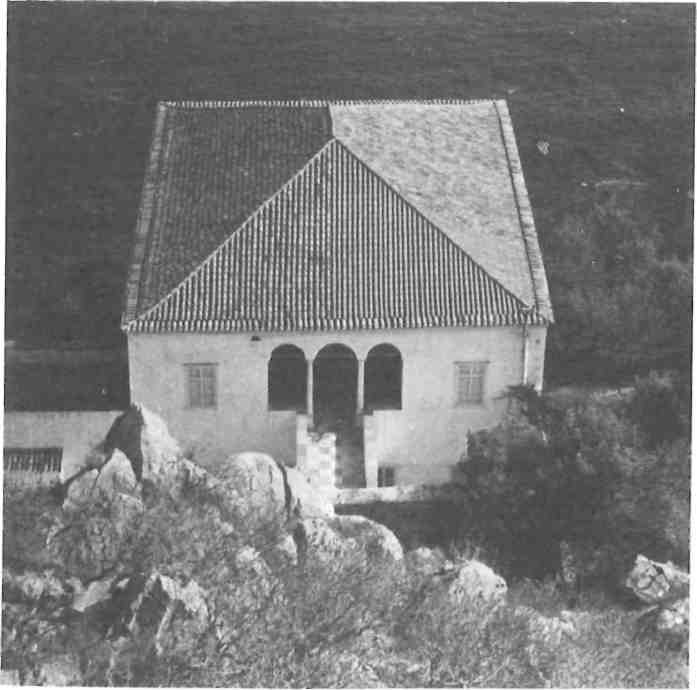
George Koundouriotis and his brother Lazarus were among the most important of these patriots. The family, whose name was originally Zervas, had emigrated to Hydra from Albania, When one of their ancestors went on a journey to the district of Kouridoura and returned wearing the costume of that area, he was nicknamed ‘Koundouriotis’. Bestowing such nicknames, or paratsoukli, has always been common in Greece and, as so often happens, it stuck and eventually became the family name.
The story of the Koundouriotis House, however, begins early in the nineteenth century. Both George and Lazarus were notable Hydriot shipowners who had become immensely wealthy during the Napoleonic Wars when they were successful in breaking the British blockade against Napoleon. (According to the Encyclopedia Britannica, the family was worth £2,000,000!) When George Koundouriotis decided to leave his paternal home on Hydra and build his own, he spared no expenses. Architects were brought from Genoa, and a richly furnished house rivalling any of the great houses in Europe was built. His descendants still live there to this day.
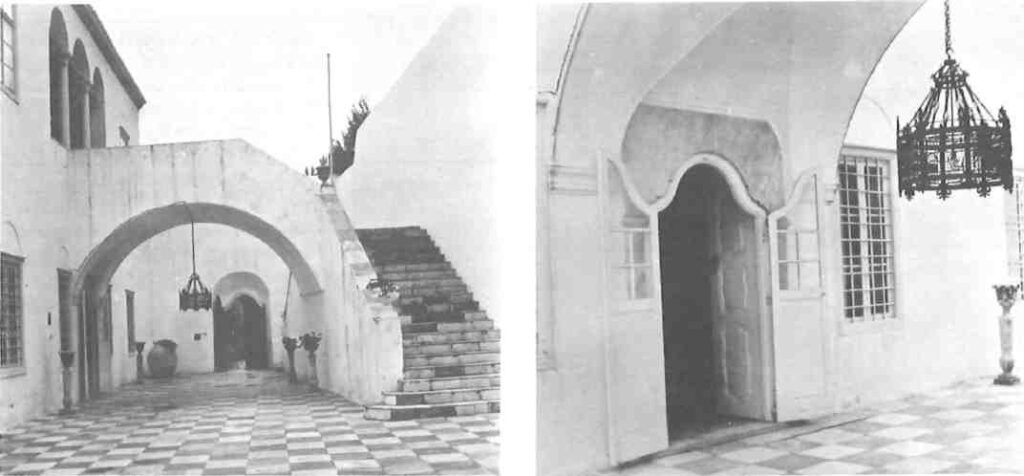
At the time of the revolution against the Turks, there were some forty thousand people living in Hydra. (Today the population numbers about two thousand.) George Koundouriotis soon established himself as a leader. When Greece finally gained her independence, the first National Assembly was convened in 1821 and in 1825 the presidency was bestowed on him. He afterwards held many high positions during the reign of King Otho. His son, Andreas, continued the tradition of service to the nation and another son, Theodore, fathered Paul, the most famous Koundouriotis. As an admiral, Paul led Greece to victory at the battle in the Elli during the 1912 Balkan Wars against the Turks, served twice as Regent, and finally, in 1924, as President of the Republic.
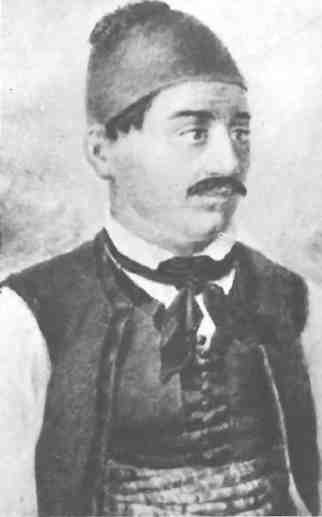
A measure of the splendour of the style in which the Koundouriotis lived is to be found in a description written by a member of the entourage of Thomas Cochrane, the tenth Earl of Dundonald. Cochrane, one of Britain’s foremost admirals who fought with the Greeks against the Turks, visited the Koundouriotis House in 1825. His companion later described a lavish feast in the lofty dining hall, then furnished in the Ottoman fashion, but today filled with furnishings brought from all over Europe. The table groaned with a feast that included roasts, pilafs, and a great assortment of dishes.
In this account, George Koundouriotis is described as a gay and boisterous gentleman, given to great bursts of laughter, but in a lithograph to be seen today in the entrance hall of the house, his face, in half-profile looking towards his left, seems somewhat melancholy, and the great almond eyes and drooping mustache appear doleful rather than joyous.
As the visitor walks through the spacious rooms today, however, it is Paul Koundouriotis’s personality that seems to pervade the mansion. Inside the courtyard, a beautiful wrought iron lantern can be seen suspended from the arcade which supports the imposing double staircase leading to the first floor. If, before entering the house, one crosses the courtyard, and passes through the lofty kitchens to the garden beyond, one comes upon another breathtaking view. Here a narrow path leads to a square terrace, below which slope away tiered gardens, decorated with pots of geraniums and gardenias. Olive trees and cypresses abound on this spot of the relentlessly rocky island. Below, the sea shines in the sunlight.
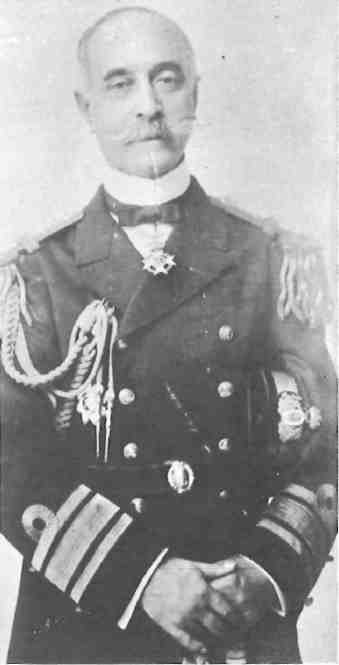
The front door, characteristic of houses built around the early nineteenth century, leads into an entrance hall containing many treasures given to the Admiral or collected by him during his travels, as well as a collection of icons. The entire house has marble floors of great beauty. Perhaps the outstanding feature of the Koundouriotis House is the remarkable ceilings of ornately and intricately carved wood, surrounded by stucco, the most superb perhaps being that of the loggia reached from the staircases which branch out from the courtyard. The kitchens display a wealth of willow pattern plates, then, it seems, considered to be kitchenware, but now part of the family’s heirlooms.
The many treasures in the main house include unique and beautiful sets of chairs in the reception rooms, some bearing pictures of the Olympian gods, and others, the adventures of Telemachus. The family portraits on the walls include several of George and Lazarus. From the windows of the immense main room the harbour of Hydra and its channel can be seen. Admiral Paul Koundouriotis’s telescope lies on the table with other memorabilia and beyond this main room is his bedroom with its commanding view of the Hydra Channel. The ten spacious bedrooms furnished with gracefully curved cupboards command a beautiful view of the sea or the hills beyond.
The Koundouriotis House may be visited when members of the family are in residence, and certainly a visit to Hydra is not complete without a visit at this enchanting stately home.







